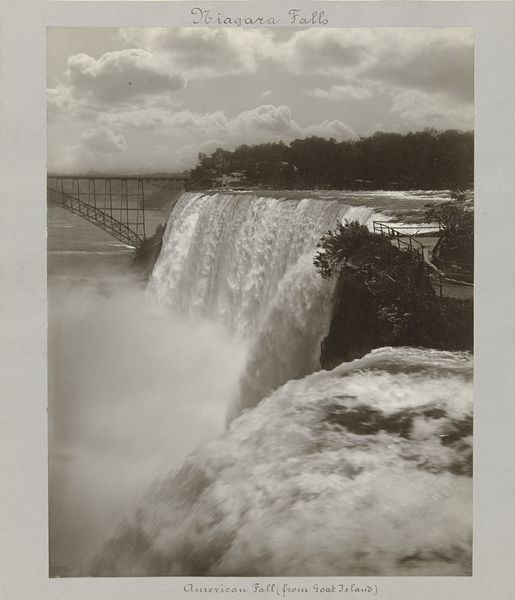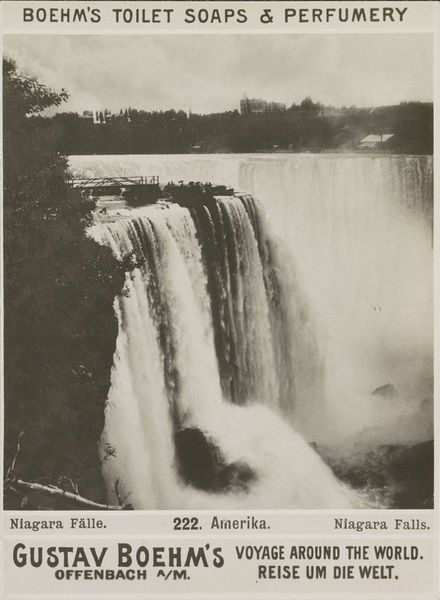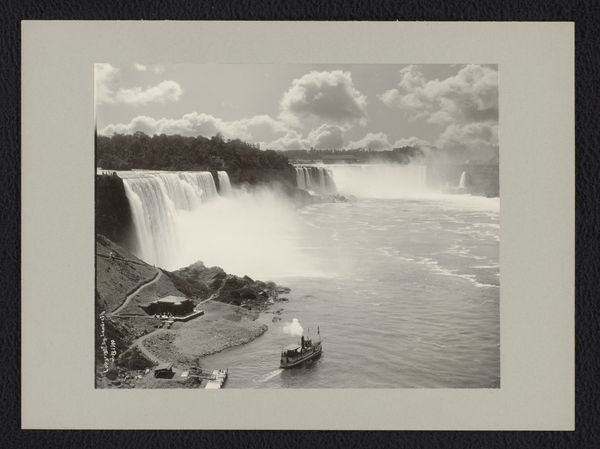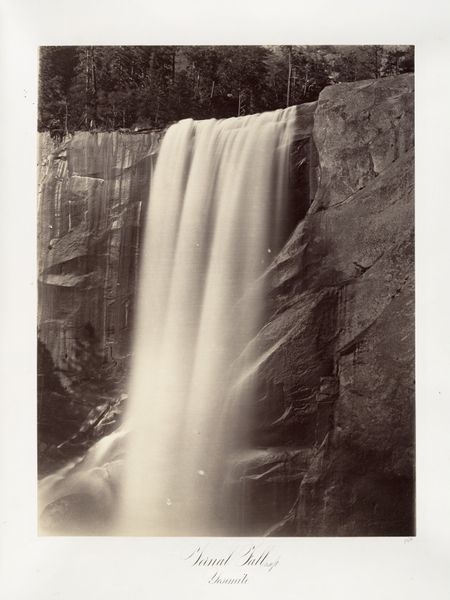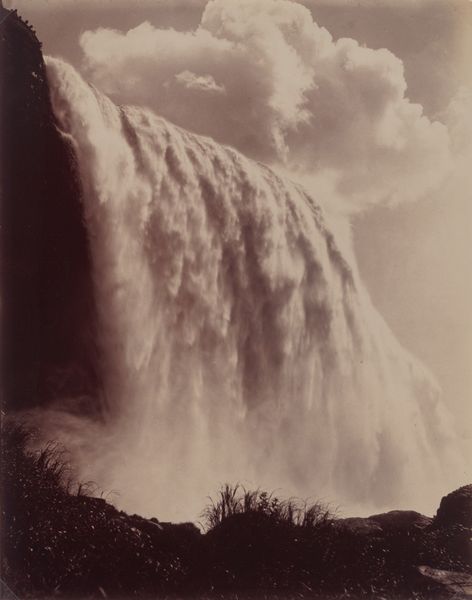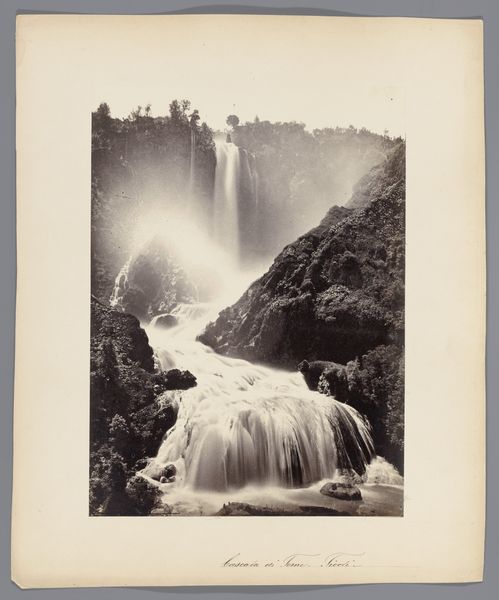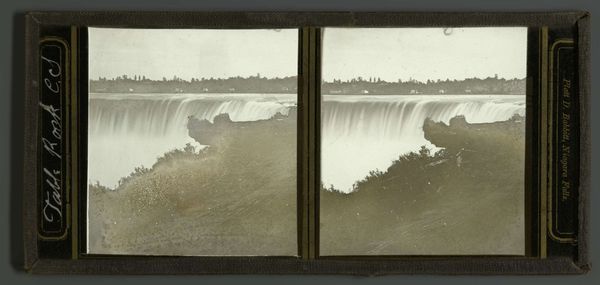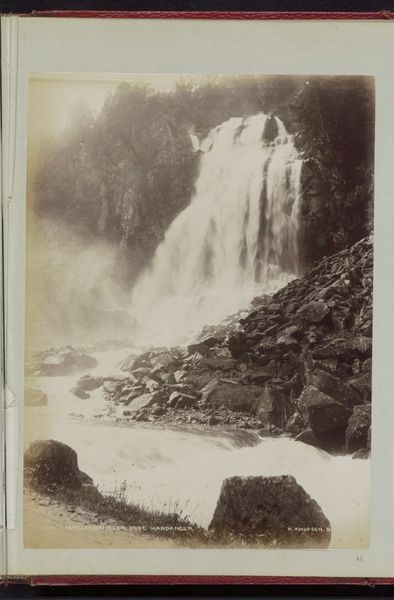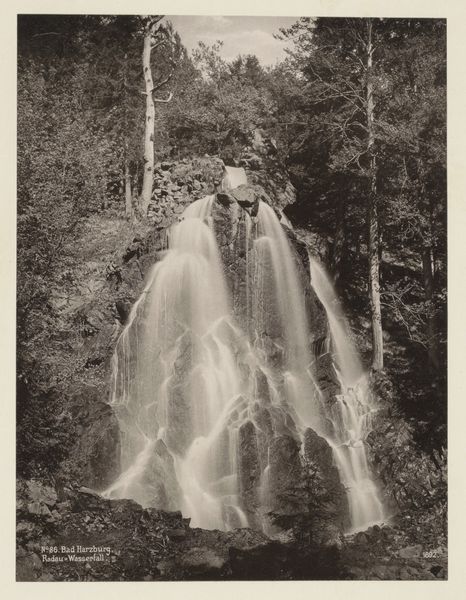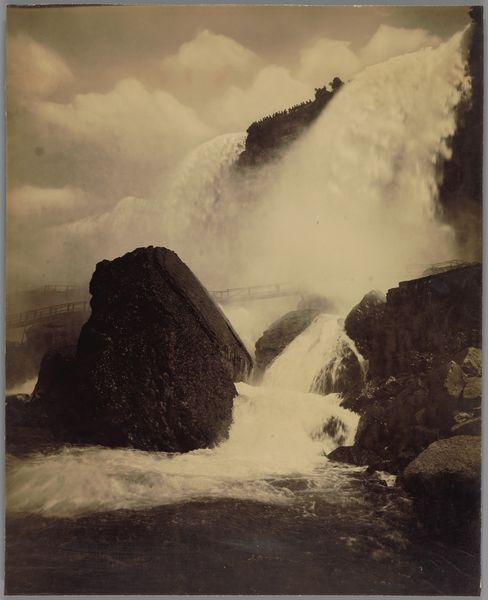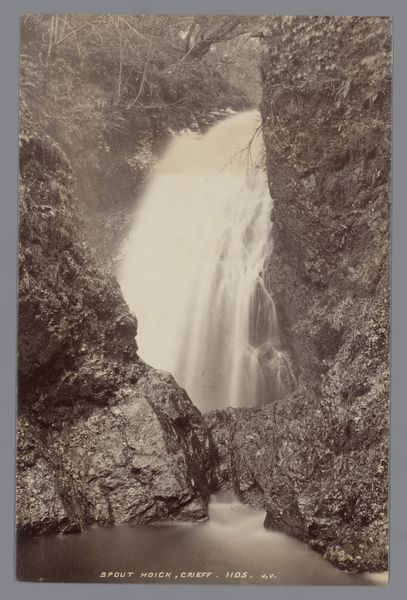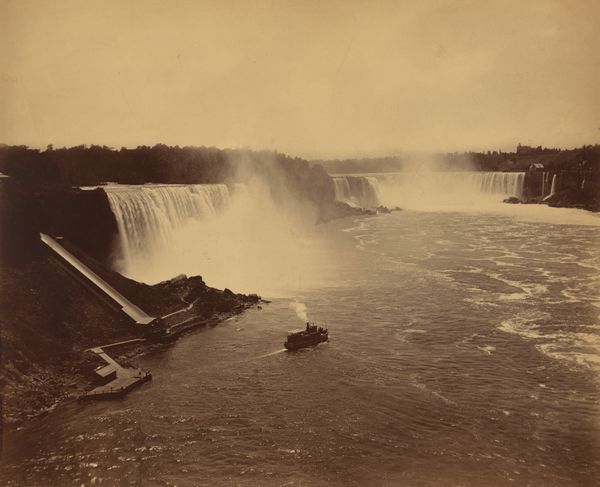
#
excavation photography
#
cloudy
#
twilight
#
snowscape
#
nieve
#
waterfall
#
low atmospheric-weather contrast
#
monochrome photography
#
gloomy
#
remaining negative space
#
shadow overcast
Dimensions: height 244 mm, width 189 mm, height 267 mm, width 230 mm
Copyright: Rijks Museum: Open Domain
Curator: Standing before us is a photographic print entitled "Gezicht op de Niagarawatervallen," which roughly translates to "View of Niagara Falls." It was created sometime between 1890 and 1900 by H.F. Nielson. Editor: My initial impression is…intense! It's got this old-timey, almost gothic drama to it. The falls look like they’re churning out of a stormy dream, not just plummeting water. Curator: The choice to present Niagara Falls in monochrome really heightens that dramatic effect you describe. During this period, photography was rapidly evolving, yet photographers like Nielson were also grappling with how to represent grand natural spectacles like this—places that were becoming tourist destinations, objects of national pride, even. Editor: Tourist destination, right! I wonder how many people posed for a snapshot right where Nielson set up his camera? But look at those swirling clouds; they seem to mimic the churning water below. It’s like the heavens are echoing the earth's raw power, not some quaint Kodak moment. Curator: Exactly! There is an undeniable emphasis on the sublimity of nature here. It evokes earlier traditions in landscape painting while adapting them to this newer medium. Consider how paintings of Niagara Falls had become major attractions by the mid-19th century—Nielson enters this dialogue, I'd argue, attempting to capture similar awe, perhaps, while staking a claim for photography's unique perspective. Editor: It's so interesting how you bring up painting. It looks almost etched, not like a simple "click." You sense Nielson fighting with light and dark, maybe even doctoring the image slightly to amplify the mood? The falls appear almost infinite in their cascade—much larger than how it really looks, and much moodier too! I bet some tourists who came there got disappointed. Curator: It’s highly probable! But photographs, then and now, construct narratives. Think about what stories images like this were telling a late 19th-century audience. Perhaps, it’s about asserting human mastery over nature but equally demonstrating nature's overwhelming power. Tourism, empire, the environment—they all get bundled into one photographic frame. Editor: Mmm, well, whatever the historical narrative, for me it just gives this lovely shudder, the awesome, slightly frightening beauty of raw, uncontrolled nature… captured in sepia tones of all things! Curator: Precisely! It reminds us that images, irrespective of intention, can retain multiple truths simultaneously, making their analysis forever complex and worthwhile. Editor: A rather wonderful waterfall-sized reminder that not everything needs to be clear as water, some mysteries we just admire!
Comments
No comments
Be the first to comment and join the conversation on the ultimate creative platform.
